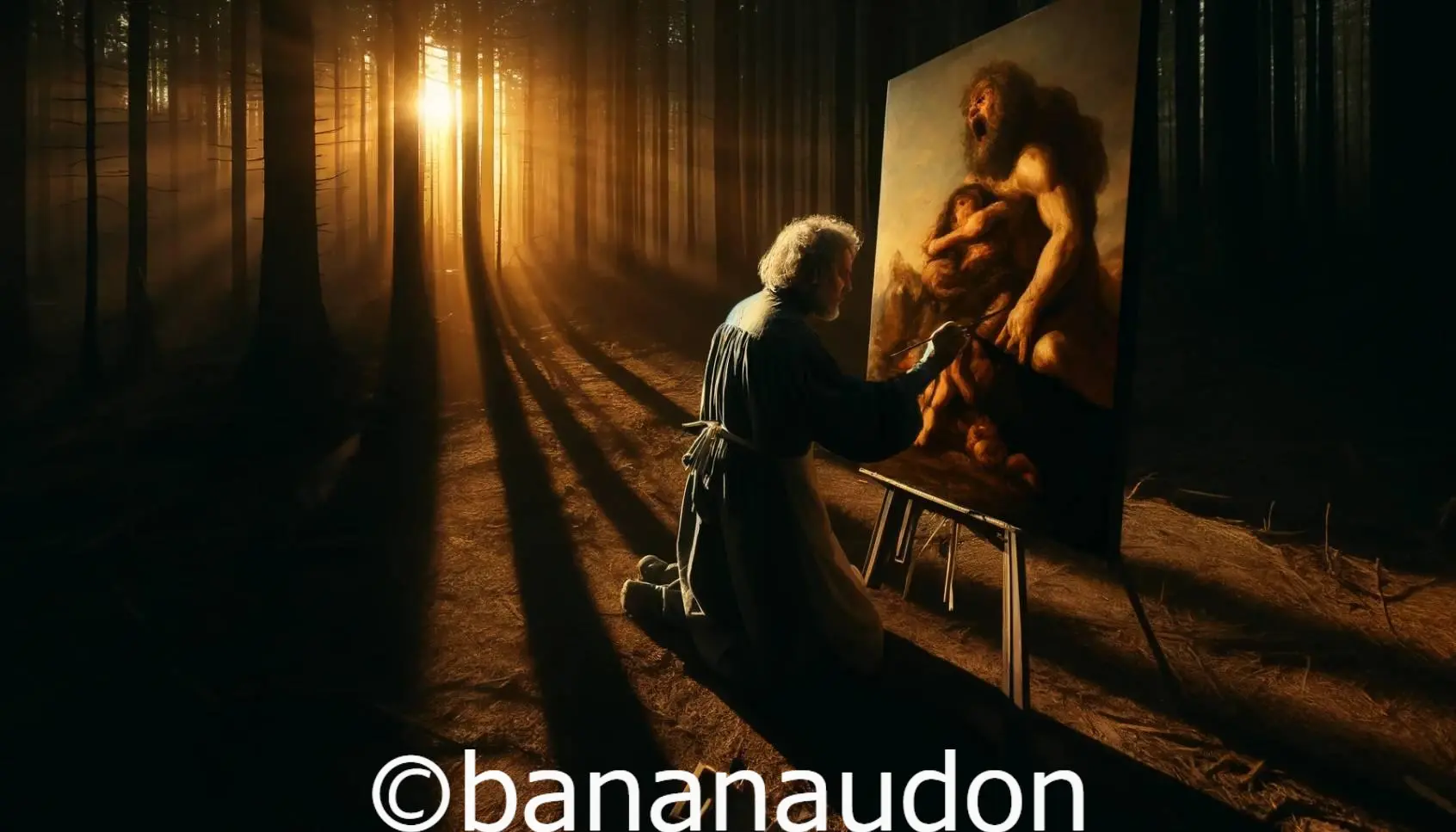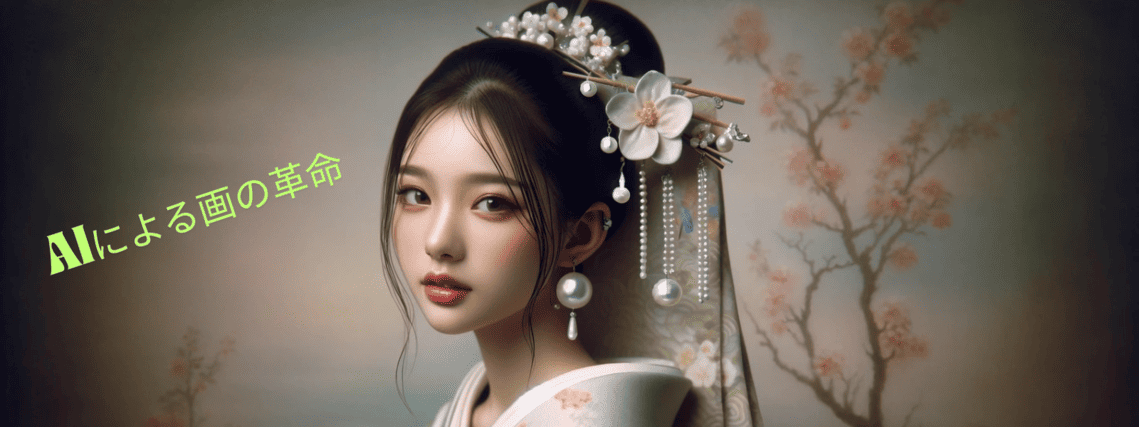Reinterpreting Saturn Devouring His Son: A Dialogue Between Light and Madness
2025.02.05投稿
広告

Reinterpreting masterpieces offers new perspectives and deepens our understanding of art.
In this article, we explore a reinterpretation of *Saturn Devouring His Son* by Francisco de Goya, focusing not just on the madness of the original but also on the creative process itself under a new light.
First Impressions and Thoughts on the Reinterpretation
This reinterpretation depicts an elderly man painting in a dense forest, where natural light and deep shadows intertwine.
The subject on his canvas is unmistakably *Saturn Devouring His Son* by Francisco de Goya.
The stark contrast between the sunlight filtering through the trees and the surrounding darkness creates a dramatic scene, seemingly illuminating both his work and his inner world.
This reinterpretation maintains the violent and deranged nature of the original while shifting the focus onto the artist’s mindset and creative process.
Instead of just witnessing the brutality of Saturn’s myth, the viewer is now drawn to the act of painting itself, offering a fresh perspective on the piece.
Background of the Original Painting
*Saturn Devouring His Son* is a painting by **Francisco de Goya**, created between **1820 and 1823**, as part of his “Black Paintings” series.
Painted directly onto the walls of his home, this work is renowned for its dark tones and horrific subject matter.
It illustrates the myth of Chronos (Saturn in Roman mythology), who, fearing a prophecy that his children would overthrow him, devoured them one by one.
Goya’s depiction of Saturn is one of sheer madness and terror, with the god savagely consuming his child in a scene of pure horror.
Key Features of the Painting
The painting is known for its dark palette and oppressive composition.
Saturn’s bloodied hands and deranged expression symbolise his internal turmoil and paranoia. The nearly pitch-black background focuses all attention on the raw horror of the scene.
Key Elements of the Reinterpretation
In this reinterpretation, the artist—or a symbolic representation of Goya—paints the masterpiece in a natural setting, a stark contrast to the original’s enclosed, claustrophobic environment.
Unlike Goya’s mural painting, here the scene unfolds on a standalone canvas, exposed to natural light.
The first striking aspect is **the shift to a natural setting**.
**Sunlight filtering through the trees** contrasts with the depicted madness, **creating an almost sacred atmosphere**.
This setting makes the act of painting resemble a ritual.
In Goya’s original, violence unfolds in darkness; in this reinterpretation, it is laid bare in the light.
It feels as though the madness is being purified, adding a new interpretation to the theme of brutality.
Differences in Angle and Style
While Goya places the viewer directly in front of Saturn’s horror, this reinterpretation takes a step back, showing the artist at work.
This shift forces us to consider **the act of creating such a nightmarish image** rather than simply focusing on the horror itself.
Unlike the original’s suffocating darkness, here, light dominates, reinforcing a sense of **introspection and a deeper artistic reflection**.
Conclusion and Analysis
This reinterpretation retains the original’s madness and violence while **shifting the focus towards the artist’s solitude and introspective journey**.
The image of an old man painting in a sunlit clearing suggests that the artistic process is a struggle against inner demons.
Goya’s raw intensity is balanced here by light, offering a **more psychological and meditative take on the masterpiece**.
Instead of solely depicting the brutality of *Saturn Devouring His Son*, this reinterpretation **invites reflection on the relationship between artistic creation and the artist’s mental state**.
Summary
This new vision of *Saturn Devouring His Son* adds **a fresh dimension**, where light and the act of creation are as crucial as the horror itself.
The contrast between the natural surroundings and the macabre subject enriches the painting’s symbolism, prompting us to reconsider **the link between art, madness, and enlightenment**.
